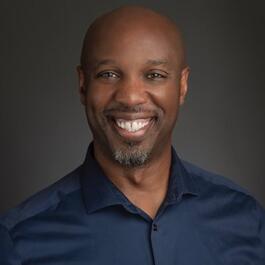
Listen and Breathe: An Interview With John Watkis - Part 1
“And we see it, we automatically know and can even tell when someone is reading something that is written. We're like, 'ah, they're reading.' And it's usually not their fault: it's that they're reading something that was written to be read by the eye, not for sound.” John Watkis This episode's guest knows a thing or two about public speaking and connecting with an audience: he's a high-stakes performance coach, a professional speaker, and the author of Speaking Notes: The Eight Essential Elements to Make Your Speech Music to Their Ears, not to mention the first Canadian-born actor to play Mufasa in the Disney musical The Lion King. Clients seek him out when they have to communicate at their best during presentations, pitches, and interviews. His name is John Watkis, and this week we'll be having a fascinating discussion about public speaking, storytelling, voiceovers, and everything else about sound in between. How People Judge You We begin with John’s earliest memory of sound, a harrowing encounter with a Winnebago when he was just four years old. From there we talk about his childhood in Toronto and how people’s mistaken impressions of him based on his Jamaican heritage led to an early understanding of how sound and voice influence people’s unconscious biases. “It was always apparent to me that the way you speak will determine how people judge you and the perception they have of you.” Writing for the Ear John goes on to tell us about the subtle differences between writing for the ear and writing for the eye, and how an experience near the start of his career revealed to him the hidden link between composing music and crafting speeches. We look at the eight elements great music and great speeches share, and how they both use rhythm to make a lasting impression. “That's the hook,” he tells us, “it's the one part we stick to. Well, speeches are very much the same.” The Sound of Trust We also discuss just how much information we convey without even realizing it, without necessarily saying a word. John explains the origins of a popular statistic about body language and talks about how cultural differences can challenge the way we’re used to reading people’s emotions. “When there was a misunderstanding or a lack of trust,” he recalls in a landmark study, “7% of that distrust came from words, 38% was the tone of voice, 55% was body language." Getting Used to Silence One thing public speakers quite often misunderstand, John explains, is the power of silence. “What is missing,” he says, “and you'll find most speakers don't want to use it, is silence. When we speak about sound, the sound of silence can be uncomfortable." Most of us use filler words and sounds to avoid awkward silence, but he shows us how silence can be an important part of communication, and how we can use it to create a powerful impression on listeners. Episode SummarySound, voice, and unconscious impressions.Writing for the ear vs. writing for the eye.The eight elements great music and speeches share.Body language, tone, and establishing trust.How to effectively harness the power of silence. Be sure to listen next week for part two as we talk about empathetic listening, the unexpected ways a speaker can connect with their audience, and the overlooked importance of breathing. Connect with the Guest Website: https://johnwatkis.com/ Follow John Watkis on Facebook: https://www.facebook.com/zumba.john.5/ Connect with John Watkis on LinkedIn: <a...
From "Audio Branding"




Comments
Add comment Feedback